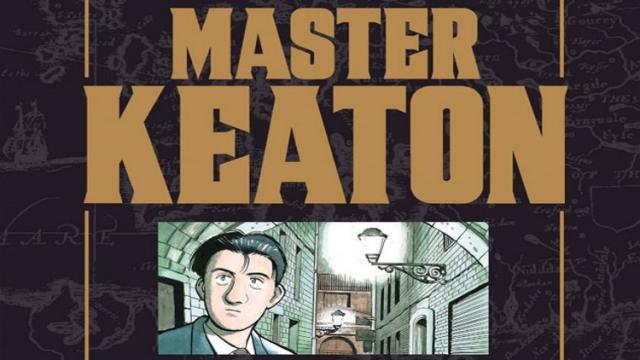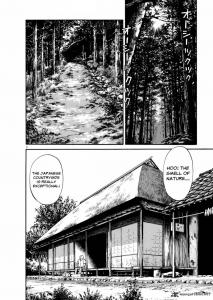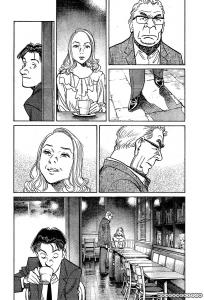Throughout the decades, there have been several case-solving stories within the world of Anime and Manga. Often times they all revolve around murder or grand schemes, but one manga dared to take this in an alternate direction. That manga is the one and only Master Keaton.
Running from November of 1988 to August of 1994 in Japan, Master Keaton was written by Naoki Urasawa and has spanned 18 Volumes (144 Chapters). It is currently licensed in North America by VIZ Media, who were nice enough to provide me with a copy of the first volume for review. Prior to receiving this review copy, I haven’t read the series, so I didn’t know what to expect going into it; however, I was pleasantly surprised with how well it was written and how interesting it was.
Let’s jam!
The Story
The manga opens up with a cliché murder, giving the reader some misdirection by creating the illusion that this is going to be another murder mystery case manga, but all of that is thrown out the window when we are introduced to the main character, Taichi Keaton.
Keaton is a lecturer of archaeology who always seems to be taking absences from his duties because on the flipside, he’s also an insurance investigator. He mainly handles cases dealing with wills, family fortunes, things of that nature. It’s a very niche genre that this manga touches upon and that’s the interesting part because as you read through the chapters, each case takes place in a different part of the world and you also gain stories of different cultures from those regions. Keaton, of course, is a master of his craft and can pretty much fill you with knowledge during those cases.
The chapters of the manga are very “episodic” in the fact that there really is no huge major overarching story. Each chapter has its own flavor to it and very rarely does a case span more than one chapter. If there was an overarching story here, it’s that Keaton and his daughter meet and he finds out that his wife is re-marrying, but not really. Every time he’s on a case he casually forgets to call his ex-wife. It kind of becomes a running gag and nice touch to keep that air about the character. They also have a bit of comedy in there pertaining to the “like father, like son” notion because his father was the same way and could not keep his wife, but unlike Keaton, his father was quite the womanizer.
Out of all the cases in the first volume, I liked the “Qheriman of the Desert” chapter. At this point, we are learning a bit more about Keaton’s background and he really shows off what he is capable of. Keaton is sent to the Taklamaklan Desert after he reunites with a colleague of his, Takakura. Takakura wants to tear down a sacred wall that is precious to the Muslims and Keaton was sent there to try and prevent it. Takakura ends up tearing down the wall anyway and the shock ends up killing the Uyghur Tribe’s leader. His son vows vengeance and leaves the lot of them out in the desert to let the desert decide their fate. It was thanks to Keaton that they all survived and earned the respect of the son, who eventually gives them water and sets them free.
While that was my favorite, each story/case, had its own flair about it… some of them even had characters in there that enhanced Keaton’s past. I loved the fact that we learned more and more about the main character through each case and how they ranged from simply business-related to personal. It’s a great way to develop the character and in the first volume, that technique was well-balanced and didn’t really seem forced. In fact, Keaton even refused some cases due to their personal nature which also showed off the balance and was a testament to his character as an insurance investigator.
The Characters
Taichi Keaton – Taichi Keaton is surely a mixed bag. In addition to being a lecturer of archaeology and an insurance investigator, he is a former member of Her Majesty’s S.A.S. While in the military, he excelled at survival techniques. His personality is honest and straightforward with a bit of naivety mixed in. On the surface he seems like he would be the kind of person who just lucks into situations, but once placed into those situations, he’s quite composed and skilled. It’s because of this that a lot of the characters he interacts with don’t really take him seriously until they witness him work. They then have a newfound respect for his abilities as a result.
He’s a pretty well-balanced main character, but if there is one flaw in his development is that he almost seems a bit too perfect. He overcomes almost every single situation that’s put in front of him and he’s not exposed to anything that would put him in a compromising situation. Then again, I’ve only read the first volume which contained 12 chapters out of 144, so he may end up in those kind of situations down the line, but for the contents contained within the scope of this review, he just seems too good at what he does. Then again, perhaps it’s a little unfair seeing how it’s just the beginning of the series, but if I were Urasawa-san, I would have ended Chapter 12 with that big hook to get people interested in Volume 2 and, perhaps, placed Keaton in that impossible situation.
Yuriko Hiraga – This is Keaton’s daughter from his ex-wife. Her role is to be the voice of reason for both her father and her grandfather. She wants the two of them to realize the mistakes they’ve made which caused both of them to get divorced. She even goes as far as to bring the two of them off on a retreat in order to discuss what they’ve done wrong and how they intend to fix the problems at hand. She also has a bit of a stern attitude about her and she’s constantly scolding her father… especially when he trails off in thought when she’s talking to him.
The rest of the characters, at least in volume one, are simply one-off characters either there to provide an interesting case, or to help enhance Keaton’s backstory. Takakura from the Qheriman of the Desert Chapter, was a former colleague of Keaton’s where the two had a falling out over the description of an archaeological find. James Wolf, from the final three chapters, was a former instructor in the S.A.S. who trained Keaton and had become kind of a vigilante. We got to learn more about Keaton’s background through this character as well as get to see an interesting case get solved. Those two are good examples of how supporting characters should be used to enhance the main character.
At the same time all the supporting characters got nice development, even though some of them were around for just a mere chapter. The details that went into their backgrounds was well-done and kept all of them interesting!
Artwork
The artwork in the manga was pretty exceptional. A lot of the backgrounds and landmarks were highly detailed and you could tell a lot of effort was put into them. Urasawa-san drew you into the world that was Master Keaton through his artwork. What actually stood out the most to me was the first page of Chapter 8 where Keaton’s father was marveling about the scenery of the countryside during the autumn. Although it was in a small pane on the page, there was an old country road in the forest and with the tons, shading, and highlights used, it almost blurred the line between old black and white photography and hand-drawn art. Obviously, staring at it you could tell it was hand-drawn, but if you were to see it at a quick glance, you’d have to do a double take before you realized it was manga art. That’s something not easy to pull off in manga, and yet, Urasawa-san managed to do so!
The character designs are a bit different than what we are used to when it comes to contemporary manga. Today, we’re treated to large eyes, wild hairstyles, and elaborate outfits that no one outside of an anime convention, would be seen normally wearing. You see that with this manga… you see an art style that more closely resembles actual human figures while maintaining that Japanese manga style that we are all familiar with. Everybody is wearing everyday clothes with nothing that sticks out as unique, however, their faces are all drawn in such a way to where you can recognize every character, even the supporting characters and minor characters!
It shows that you can do a lot with minimization and because as such, nothing really feels like it doesn’t belong. This style is very typical of Senin mangas and Master Keaton certainly pulls off this style very well.
Overall Thoughts
I can honestly say that I enjoyed this manga. The stories kept me reading, the background of Keaton was well-developed, the supporting characters played their roles and then some, and the artwork drew me in. It has every quality of a what a good manga should be. A complaint I would have is how the supporting characters are built up and then they drop off the face of the Earth, suddenly. I know that this is usually the case in mangas that are episodic, but I would have liked to see them get a little more acknowledgement.
That could be due to the fact that I’ve only read one volume, so I guess that it is an unfair complaint as this isn’t a complete review, but I can only call what I see here. If you like the different cultural aspects that this world has to offer and you want to see a different twist on the typical investigation genre, then Master Keaton will provide a satisfactory detraction from the status quo. Just after one volume, it was enough for me to give this a recommendation to anyone who wants to pick it up and read it for themselves.
If you’re interested in seeing this animated, Master Keaton does have a 24-episode adaptation that was produced by Geneon and Madhouse. The anime ran between October 1998 to March 1999. You can pick it up on DVD from Amazon.
As mentioned at the beginning of this review, Master Keaton is licensed and available from VIZ Media. If you would like to purchase the series, you can do so by clicking here: http://www.viz.com/manga/print/master-keaton-volume-1/11344
I would like to, again, thank VIZ Media with supplying me with a review copy of this manga!
Recommendations
If you’re looking for more investigation mystery titles, I will point you towards GOSICK. It is episodic, much like Master Keaton, and also has different cultural aspects to it. There is also the long-running series Detective Conan, which is also licensed by VIZ Media. Hopefully between those two, you can find something to your liking.
Until next time,
Ja ne!
A little something different
A manga that dares to take the detective genre in a different direction and does it well!
-
Even a hare will kick a dog in the face to try and kill it.





